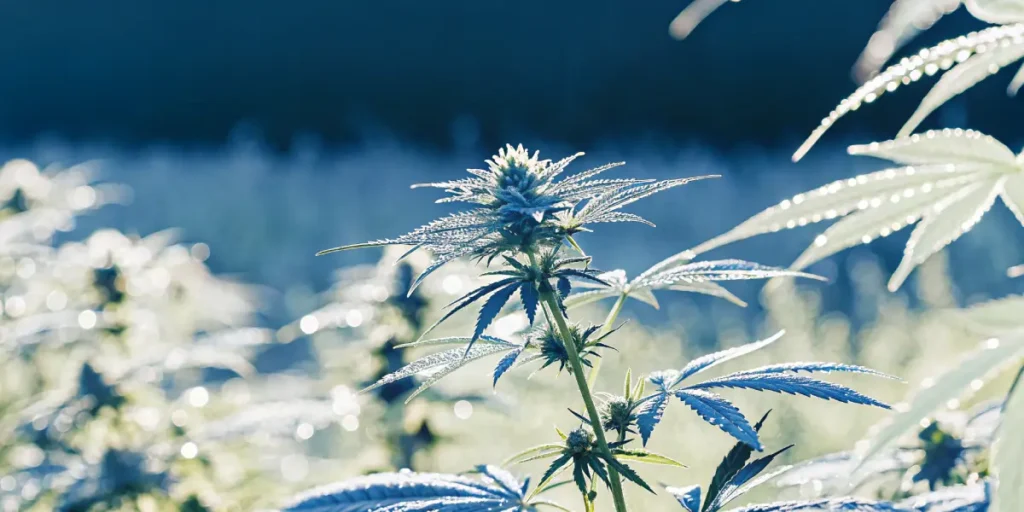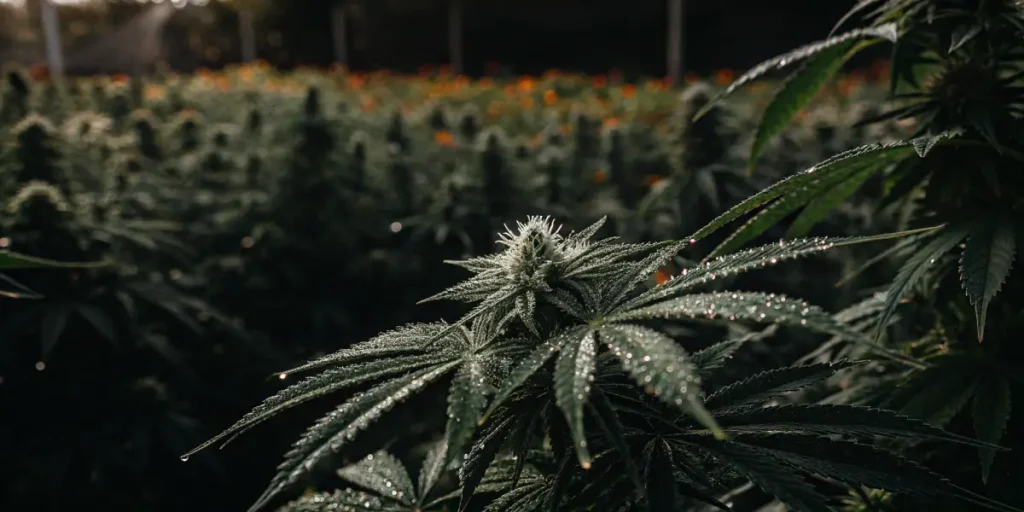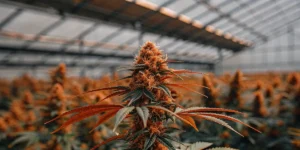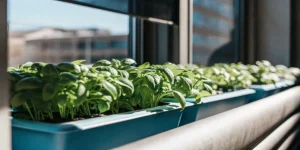Autoflowering plants outdoors can offer a rewarding experience for both novice and seasoned growers. These plants automatically switch from vegetative growth to the flowering stage with age, not light cycle changes. This makes them ideal for outdoor growth, especially in areas with unpredictable light conditions.
For first-time growers, these plants provide a simpler route to cultivation. They require less maintenance compared to photoperiod strains. Autoflowering seeds from Global Green Genetics such as “Auto Northern Lights” are known for their resilience and ease of growth.
Experienced cultivators appreciate the rapid lifecycle of autoflowering strains, allowing for multiple harvests in a single outdoor season. Additionally, these plants tend to be more compact, making them discreet and manageable for outdoor gardens.
Choosing the Right Strain
Selecting the right strain is crucial for a successful outdoor grow. Different strains have unique needs and characteristics. Autoflowering seeds like “Auto Blueberry” from Global Green Genetics are known for their fruity aroma and adaptability to different climates.
It’s important to consider your local climate. For cooler regions, choose strains that can handle lower temperatures. “Auto White Widow” is a robust choice that can withstand various environmental conditions, making it ideal for diverse climates.
When choosing autoflowering plants outdoors, knowing the specific growth habits of each strain is essential. Some strains are more tolerant to environmental stressors, while others might require more attention to detail. Researching strain reviews and feedback from other growers can provide valuable insights.
Moreover, consider the expected yield and flowering time of each strain. Some autoflowering strains can produce more significant yields in less time, an attractive feature for those aiming for efficiency in cultivation. This makes growing autoflowering plants outdoors a strategic decision based on individual goals and growing conditions.
Climate Considerations for Outdoor Autoflowers
Climate plays a pivotal role in the growth of autoflowering plants outdoors. These plants can thrive in various conditions, but understanding your local weather is key. Warm climates with consistent sunlight are ideal, but many strains can adapt to less-than-perfect conditions.
In colder regions, consider planting in the late spring to avoid frost. Autoflowering seeds like “Auto Northern Lights” are bred to withstand cooler nights, making them a popular choice in temperate zones.
Seasonal changes can also impact the growth of autoflowering plants outdoors. It’s crucial to anticipate fluctuations in temperature and rainfall during the growing season. Adjusting planting schedules and using protective measures such as garden covers can help mitigate adverse weather effects.
Additionally, microclimates within your garden area can affect plant growth. Identifying spots that receive optimal sunlight and have natural windbreaks can enhance growth conditions. These nuances in climate considerations for outdoor autoflowers can significantly influence the success of your harvest.
Best Soil for Outdoor Autoflowering Plants
Choosing the best soil for outdoor autoflowering plants is essential for a bountiful harvest. Well-draining soil is crucial, as it prevents waterlogging, which can harm the roots. A mixture of peat moss, compost, and perlite provides a balanced medium.
Adding organic matter like compost enriches the soil with nutrients. This helps support healthy plant growth and boosts yields. Autoflowering strains like “Auto Blueberry” thrive in nutrient-rich environments, producing dense buds.
Soil texture and aeration are also vital components of the best soil for outdoor autoflowering plants. Loose, crumbly soil allows roots to expand and access nutrients efficiently. Regularly aerating the soil can prevent compaction and promote healthier root systems.
Furthermore, soil amendments like worm castings or bat guano can be beneficial. These organic additives enhance the microbial life in the soil, leading to better nutrient uptake. Tailoring your soil mix to the specific needs of your autoflowering plants can lead to more robust growth and higher yields.
Outdoor Autoflowering Plant Yield Tips
Maximizing yield is a common goal for growers. Autoflowering plants have a shorter lifecycle, so every step counts. Start with quality seeds from Global Green Genetics to ensure strong genetics.
Regular feeding with balanced nutrients helps boost plant growth. Avoid overfeeding, as this can lead to nutrient burn. Stick to a consistent watering schedule to keep the plants healthy and productive.
Pruning and training autoflower techniques can further increase the yield of outdoor autoflowering plants. Methods such as low-stress training (LST) help maximize light exposure to lower bud sites, encouraging uniform growth and larger harvests.
Implementing mulching practices can also contribute to maintaining soil moisture and regulating temperature. This can reduce stress on the plants, allowing them to focus energy on producing abundant, high-quality buds. These outdoor autoflowering plant yield tips can lead to a more productive growing season.

Pest Control for Outdoor Autoflowering Plants
Pest control is vital when growing autoflowering plants outdoors. Common pests include aphids, spider mites, and caterpillars. Regularly inspect your plants for signs of infestation and act promptly.
Natural pest control methods are effective and safer for your plants and the environment. Companion planting with herbs like basil and mint can deter pests naturally. Neem oil is another effective organic pesticide.
Biological control methods, such as introducing beneficial insects like ladybugs, can naturally reduce pest populations. These insects prey on common pests, providing an eco-friendly solution to pest control for outdoor autoflowering plants.
Creating a diverse garden ecosystem can also deter pests. Incorporating a variety of plants can confuse and repel harmful insects, reducing the likelihood of infestations. Maintaining these strategies helps ensure a successful and thriving garden.

FAQs
What are the benefits of growing autoflowering plants outdoors?
Growing autoflowering plants outdoors offers several advantages, especially for those new to cultivation. These plants are less dependent on light cycles, making them easier to manage. They also have a shorter growth period, leading to quicker harvests.
Experienced growers appreciate the ability to cultivate multiple cycles in one season. This can significantly increase yield compared to traditional photoperiod plants. Additionally, autoflowers are generally more resistant to pests and diseases.
Another benefit of growing autoflowering plants outdoors is their resilience to environmental stressors. Many strains have been bred to withstand fluctuations in temperature and humidity, making them suitable for a variety of climates.
Autoflowering plants also tend to require less equipment and resources, such as light fixtures and extensive nutrient regimens. This makes them a cost-effective option for growers aiming for sustainability and reduced environmental impact.
How do I choose the best soil for my autoflowering plants?
Selecting the best soil for your outdoor autoflowering plants ensures they have the nutrients needed to thrive. Choose a well-draining soil mix with components like peat moss and perlite. These elements help maintain proper moisture levels and aeration.
Incorporating organic matter such as compost into the soil enriches it with essential nutrients. Regular soil testing helps maintain optimal pH levels, ensuring your plants can absorb nutrients effectively and produce a generous yield.
Monitoring soil health throughout the growing season is crucial. Adjusting the soil composition based on plant needs and environmental changes can lead to better plant performance and increased yields.
Using organic fertilizers and soil conditioners can further enhance soil quality. Products such as bone meal or kelp meal provide slow-release nutrients, supporting sustained growth and development for your autoflowering plants outdoors.
What climate conditions are ideal for outdoor autoflowering plants?
Ideal climate conditions for growing autoflowering plants outdoors include warm temperatures and consistent sunlight. However, many strains are adaptable to less-than-perfect conditions. It’s crucial to understand your local climate and select strains suited for it.
In cooler climates, choose strains bred for resilience against lower temperatures. Planting in late spring can avoid frost damage. It’s also important to manage rainfall and humidity to prevent mold and other issues.
Autoflowering plants outdoors benefit from stable environmental conditions. Sudden weather changes can stress plants, impacting growth and yield. Implementing protective measures, such as windbreaks or shade cloths, can help mitigate these effects.
Utilizing microclimate strategies, such as planting near heat-absorbing surfaces, can enhance growing conditions in cooler climates. These adjustments can create a more favorable environment for your plants, promoting healthier development.
How can I increase the yield of my outdoor autoflowering plants?
Increasing the yield of your outdoor autoflowering plants involves several strategies. Start with high-quality seeds to ensure strong genetics. Regular feeding with balanced nutrients supports vigorous growth and increases bud production.
Maintaining a consistent watering schedule is also key. Avoid overwatering or underwatering your plants. Implementing pest control measures helps protect your plants from damage, ensuring they can focus energy on producing large, healthy buds.
Optimizing plant spacing can also enhance growth and yield. Ensuring adequate space between plants allows for better air circulation and light penetration, reducing the risk of disease and encouraging robust development.
Incorporating techniques such as topping or fimming can encourage bushier growth, leading to more bud sites. These practices, combined with proper nutrition and care, contribute to fulfilling outdoor autoflowering plant yield tips and achieving bountiful harvests.
What are the best pest control strategies for outdoor autoflowering plants?
Effective pest control strategies for outdoor autoflowering plants include regular inspection and organic methods. Natural options like neem oil and companion planting with pest-repelling herbs can keep infestations at bay.
Maintaining a clean garden reduces pest risks. Remove dead plant material and debris from the growing area. This practice not only deters pests but also promotes healthy growth by improving air circulation around your plants.
Incorporating physical barriers, such as netting or row covers, can protect plants from larger pests like birds and rodents. These barriers are an essential part of a comprehensive pest control strategy for outdoor autoflowering plants.
Rotating crops and diversifying plant varieties can also disrupt pest life cycles, reducing the likelihood of recurring infestations. This holistic approach helps create a balanced ecosystem, fostering healthier and more resilient plants.





